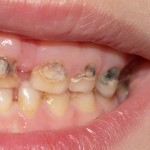
The American Academy of Paediatric Dentistry has defined dental neglect as, ‘a wilful failure of a parent or guardian to seek and complete a therapy needed to maintain a degree of oral health and requirement for adequate function and the absence of discomfort and infection’. In the UK word ‘persistent’ rather than ‘wilful’ is used. While dental caries is common in children it is preventable and a diagnosis of dental neglect (DN) be just made on the basis of clinical evidence and the presence of dental caries, other dental and non-dental factors need to be considered. Feature of concern include, obvious dental disease, significant impact on the child and failure to obtained dental care.
The aim of this review was to get an overview of the prevalence of dental neglect (DN) in children worldwide and highlight empirical findings on risk factors for DN in children.
Methods
Searches were conducted in the Medline/PubMed, PsychINFO, CINALH Web of Science and Google Scholar databases with no restrictions on date or language. Studies on children and adolescents aged 0-19 years providing information on characteristics of dental neglect and risk factors were considered. Two reviewers independently reviewed and selected studies, extracted data and assessed risk of bias using Joanna Briggs Institute critical appraisal tools. A narrative summary of the findings was presented.
Results
- 10 studies were included
- 7 studies were cross-sectional, one was a retrospective cross-sectional study, one longitudinal and one study used both quantitative and qualitative methods.
- 5 studies were from higher income countries, 3 from upper middle-income countries and 2 from lower-middle-income countries (world bank classification).
- Prevalence of dental neglect
- 7 of the 10 studies defined dental neglect.
- Prevalence estimates for DN ranged from 10% to 83% and from 34% to 56% with outliers removed (7 studies).
- Prevalence of untreated caries ranged from 38.9% to 99% (3 studies).
- Risk factors for dental neglect
- Parent ́s educational level, occupation, maternal dental anxiety, their attitude towards primary dentition, an irregular visit to a dentist, ‘looked- after’ child (LAC), and having single parent were found to be statistically significant risk factors.
- Children of refugee population, immigration background of parents, children living in an underprivileged area, parents’ low socio-economic status, high cost of dental treatment, and low paediatric population were considered to be the positive significant risk factors for DN in all included studies.
Conclusions
The authors concluded: –
The study showed a high prevalence of DN and untreated caries. Due to the under-reporting of DN and a limited number of included studies, the results cannot be generalized worldwide. There is a need to make policies that include reporting of DN to higher authorities by dental professionals.
Comments
The reviewers have searched a good range of sources and included 10 studies. They did however note challenges in searching for studies as there is no specific Medical Subject Headings (MeSH) term for dental neglect so it is possible that relevant studies may have been excluded. The reviewers discuss two potential types of DN, dental prevention neglect (DPN) where neglect in preventing dental disease results in dental treatment need and dental treatment neglect (DTN) where failure to have any necessary dental treatment results in untreated dental problems. They also note that within the wider framework of child neglect, DN is, under-recognized by professionals. Most of the 10 included studies are cross-sectional with only one being longitudinal which needs to be considered when assessing the findings. The review provides a helpful summary of the limited available indicating that DN is a issue in both high and low income countries as well as a number of potential risk factors for DN. Additional research is required to develop policies and interventions to mitigate the risk factors in order to reduce levels of dental neglect.
Links
Primary Paper
Khalid G, Metzner F, Pawils S. Prevalence of dental neglect and associated risk factors in children and adolescents-A systematic review. Int J Paediatr Dent. 2021 Sep 29. doi: 10.1111/ipd.12923. Epub ahead of print. PMID: 34585811.
Other references
Dental Elf – 1st Nov 2013
Review reiterates that certain features of dental neglect are clearly identifiable
